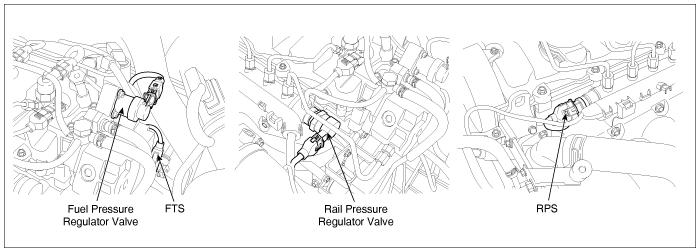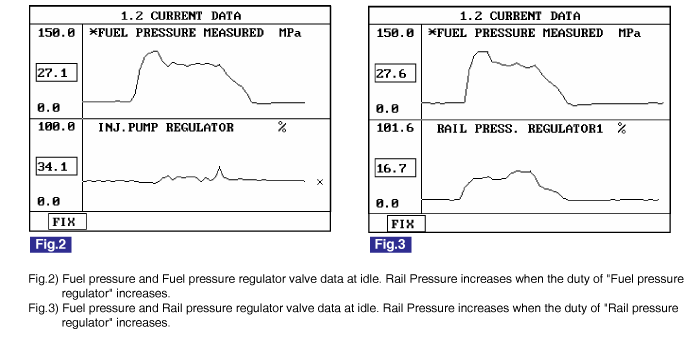Monitoring rail pressure data
Connect Scantool to Data Link Connector (DLC).
Warm engine up to normal operating temperature.
Turn "OFF" electrical devices and A/C.
Monitor "FUEL PRESSURE MEASURED", "FUEL PRESS. S/POINT", "RAIL PRESS. REGULATOR1", "INJ. PUMP REGULATOR" parameter on the Scantool.
Specification : FUEL PRESSURE MEASURED similar to "FUEL PRESSURE-TARGET"
FUEL PRESS. S/POINT : 28.5 ± 5 Mpa
RAIL PRESS. REGULATOR1 : 17 ± 5%
INJ. PUMP REGULATOR : 35 ± 5%

Check if "FUEL PRESSURE MEASURED"data is similar to "FUEL PRESS. S/POINT". Not only former two data but also "RAIL PRESS. REGULATOR1" and "INJ. PUMP REGULATOR"should be monitored carefully. Although "FUEL PRESSURE MEASURED" is similar to "FUEL PRESS. S/POINT", if "RAIL PRESS. REGULATOR1" and "INJ. PUMP REGULATOR" is out of specification, it means wear, leakage, stuck of fuel system.




